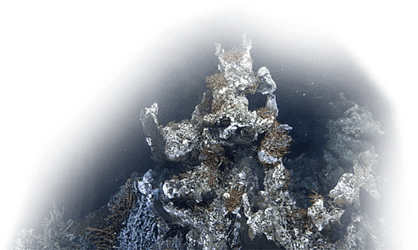Ocean Networks Canada (ONC) is pleased to announce Adam Stoer and Alexander Dolcimascolo as the 2025 recipients of the $20,000 Roy Hyndman Ocean Observing Award.
The award supports graduate students in advancing research using ONC ocean observing data and/or technology, as they collaborate with leading ocean technology experts.
The award is named in honour of the late Dr. Roy Hyndman, a respected scientist and long-time supporter of ONC’s NEPTUNE observatory who served as Chair of the Ocean Observatory Council for more than six years. Hyndman was a strong advocate for supporting students and faculty who use ONC infrastructure in their research programs.
Using Argo data to investigate oxygen loss and ocean warming
Adam Stoer, co-recipient of the 2025 Roy Hyndman award, for his research into NE Pacific oxygen warming and ocean warming. Credit: Adam Stoer
Adam Stoer is investigating the rate of oxygen loss and ocean warming in the Northeast Pacific Ocean using data collected by ONC’s ‘droids of the deep’—a fleet of 14 Deep Argo floats.
A PhD student at Dalhousie University, Stoer is comparing Argo float data from ONC’s fleet to historical oceanographic records, dating as far back as the 1950s.
Alongside his analysis of deoxygenation in the region, Stoer is also investigating how the boundaries of oxygen minimum zones (OMZs) are changing as a result of ocean deoxygenation.
“One of the major benefits of Deep Argo floats is that they can capture the full extent of OMZs, which can extend beyond the two kilometre depth horizon of standard Argo measurements,” Stoer explains in his proposal.
ONC’s fleet of deep-ocean Argo floats has a vertical range of 4,000 metres—double the depth of most other operational floats. These autonomous ocean monitoring devices collect oceanographic data by traveling up and down the water column, while following the motion of the ocean. As a float breaches the surface, it connects via satellite to the global Argo data portal to transmit data before beginning the cycle again. This data includes seawater temperature, salinity, pressure, and dissolved oxygen.
Stoer plans to incorporate this research into his dissertation and present the findings at upcoming conferences.
Analyzing ocean-bottom pressure data to understand tsunamis
Alexander Dolcimascolo, co-recipient of the 2025 Roy Hyndman award, for his research into tsunami wave generation and propagation. Credit: Alexander Dolcimascolo
Alexander Dolcimascolo is advancing our understanding of “tele-tsunamis”—tsunamis generated by large, distant earthquakes.
He is analyzing ocean-bottom pressure data from the 2021 8.2-magnitude Chignik, Alaska earthquake, and recent 2025 M8.8 Kamchatka earthquakes, recorded by ONC’s seafloor sensors along the NEPTUNE observatory off British Columbia’s west coast. By combining these records with coastal tide gauge data, Dolcimascolo is simulating earthquake scenarios to study how tsunamis are generated and propagated across the ocean and into the coasts.
“Analyzing seafloor pressure data from real tsunami events, augmented by synthetic earthquake-tsunami simulations can contribute to future ocean observing and tsunami early warning applications,” he shares.
Through this work, Dolcimascolo is investigating why some distant earthquakes produce damaging waves while others do not. In particular, he is examining how earthquake rupture depth and ocean water depth shape tsunami waveforms as they travel across the Pacific.
Studying these earthquake events provides valuable insights on ways to improve early warning systems for Canada’s west coast and future hazard assessments.
A PhD student at the University of Victoria, Dolcimascolo plans to incorporate this research into his dissertation and present his findings at national and international conferences.
